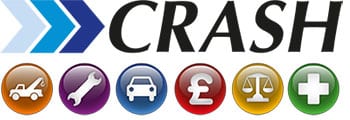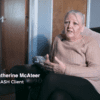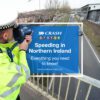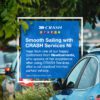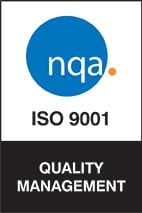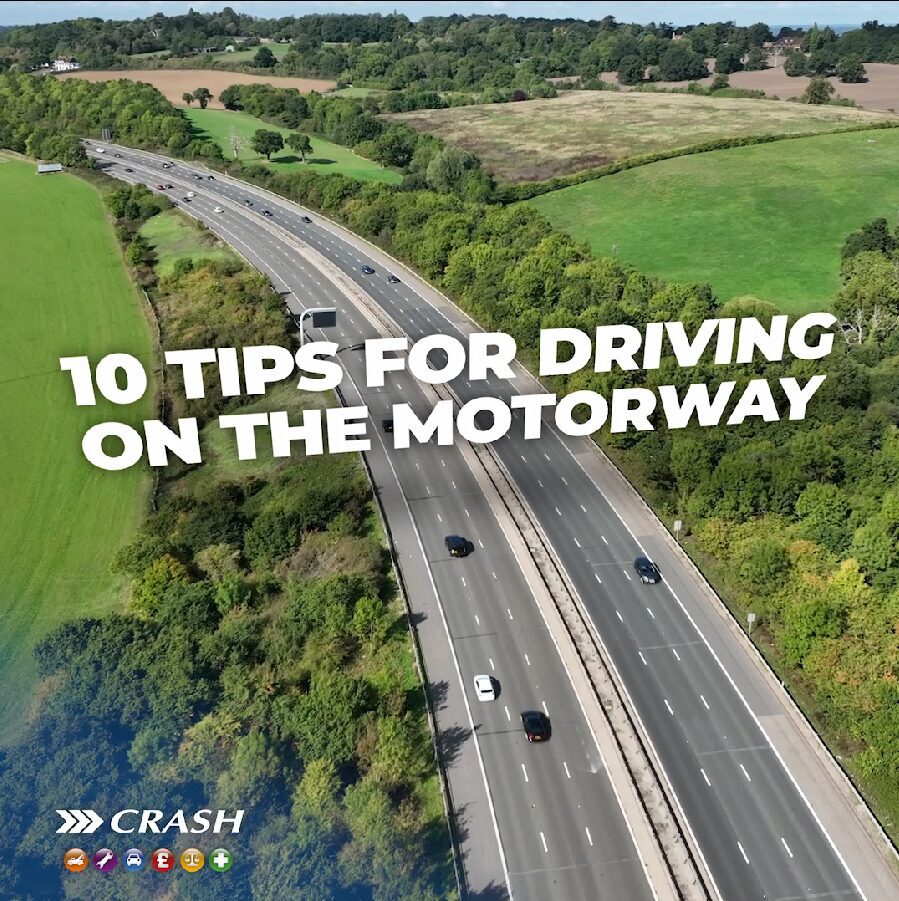
Driving on motorways can be daunting but if you know the rules and stick to them you will have a much safer journey. Road Safe NI have provided 10 top tips to help you when driving on motorways.
1. Ensure your car is well prepared
Driving on the motorway means driving at higher speeds so it is vital that your car is in good condition and able to cope with the extra demands placed on it. A handy guide to the checks you should carry out is the F.L.O.W.E.R. checks.
F Fuel- ensure you have enough to get you to your destination.
L Lights – check your headlights, brake lights, Fog lights, taillights, indicators.
O Oil – check oil level when the engine is cold.
W Water – check coolant level and windscreen washer reservoir.
E Electrics – check your horn, washers, lights etc.
R Rubber – tyres (min 1.6mm tread depth for cars), check window wiper rubber.
2. Joining the motorway
You may find yourself joining the motorway via a slip road. The purpose of the slip road is to allow you to match your speed to that of the vehicles travelling in the left-hand lane. Keep moving but wait for a suitable gap and then merge safely using your MSM (Mirror, Signal, Manoeuvre), PSL (Position, Speed, Look) routine into the traffic flow. If necessary, adjust your speed before you reach the end of the acceleration lane to avoid braking and coming to a stop.
3. Stick to the left lane
Drivers should always travel in the left-hand lane, (lane one) unless overtaking slower traffic, in which case lanes two and three can be used. If you are overtaking several slower vehicles, it may be safer to remain in the middle lane rather than continually changing lanes. But once you’ve finished overtaking, you should always move smoothly back into lane one, always remembering your MSM, PSL routine. Be aware of emergency services, traffic officers, recovery workers and other people or vehicles stopped on the hard shoulder or in an emergency area. If you are driving in the left lane, and it is safe to do so, you should move into the adjacent lane to create more space between your vehicle and the people and stopped vehicles.
4. Use your mirrors
The importance of using mirrors cannot be overstated. It is vital that you are aware of what is going on all around you. Remember, all mirrors will have blind spots, some that are big enough to prevent you from seeing a car or motorbike approaching from behind. Make sure to take a quick glance over your right shoulder to check that all is clear before you change lanes – it could be a life saver.
5. Keep your distance
Always maintain at least a minimum two-second gap between you and the vehicle in front when conditions are dry. In wet weather, four seconds is the minimum recommended time separation.
6. Do not exceed the speed limit for your vehicle
Be aware of the maximum speed limit for your vehicle. Different vehicles have different limits. Cars and motorcycles. Are limited to 70mph. For vehicles towing a caravan or trailer, HGVs, articulated goods vehicles, and buses or coaches over 12 metres in length, the limit is 60 mph.
7. Ensure you fully understand motorway signs and signals
The Highway code and the publication “Know your traffic signs” explain motorway signals clearly. It is vital you have a full understanding of them. They are used to warn of a danger ahead such as an accident, fog, or road maintenance staff on the carriageway or lane closures etc.
8. Breakdown
If you are unlucky enough to break down whilst on the motorway, move over to the hard shoulder and ensure your hazard lights are on. Make sure you get yourself and any passengers out of the car via the nearside doors and wait behind the barrier at the roadside, away from the fast-moving cars. You can then make a call to a recovery breakdown service such as Granite Breakdown (028 9002 9457) or use the emergency phones (which will be clearly signposted).
9. Leaving the motorway
When it comes to leaving the motorway, you should move into the left-hand lane in plenty of time if you are not already in it. Motorway exits are clearly usually marked one mile and a half mile before the exit. Three signs count down to the exit junction in 100 metre increments. You should start indicating at the 300-metre mark, reduce your speed on the slip road as necessary being careful as many slip roads have sharp bends. When you have left the motorway, remember to keep an eye on your speed as after travelling at high speeds, 50mph may now feel like 30mph.
10. What to do if you’re in an accident?
If the worst should happen to you, do these 5 things immediately after an accident.
- Contact the police on 999 or the non-emergency number, 101.
- Get to safety.
- Check on the other driver and take pictures from the scene.
- Exchange contact details.
- Contact CRASH Services on 028 9066 0244, CRASH, will take care of everything at no cost to you. CRASH will deal with your accident from start to finish and even offer legal and medical assistance, aiming to help you get back on the road as quickly as possible.
If you’ve been in an accident, CRASH Services can take care of everything at no cost to you. Please speak to one of our specialists from our claims team today. Or call us now on 028 9066 0244.
CRASH Services can arrange vehicle recovery, collision investigation, organise repairs, provide a replacement vehicle, liaise with insurance companies and offer legal and medical assistance.
